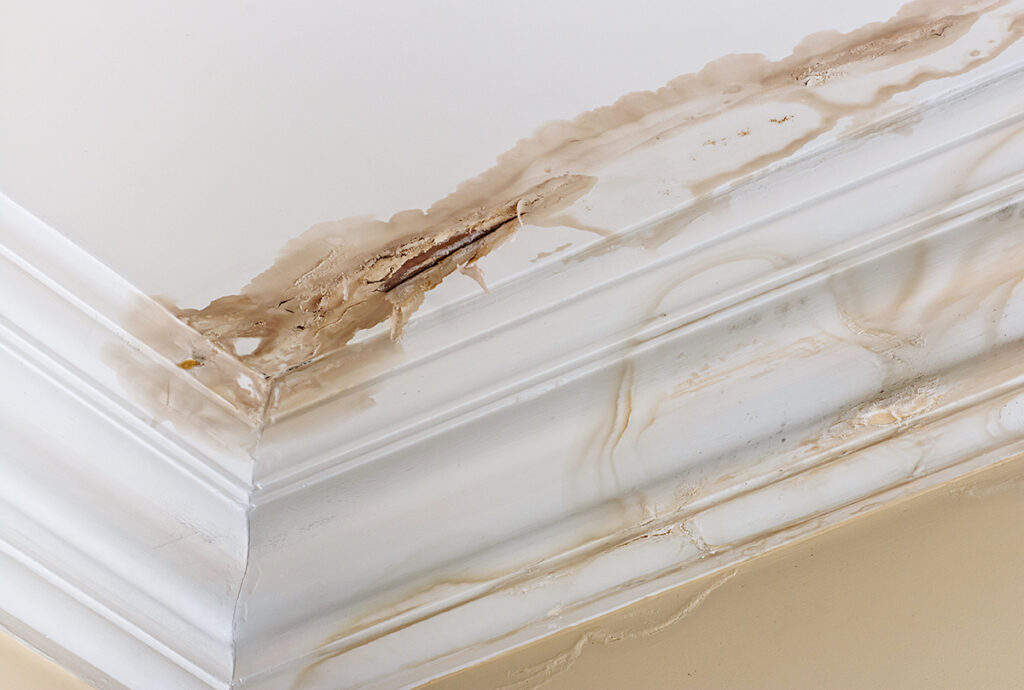Discoloration: Water stains or discoloration on walls, ceilings, and floors are a telltale sign of water damage. The stains may be brown or yellow, and they may spread over time if the source of the water is not addressed.
Odors: Water damage can cause unpleasant odors, especially if the water has been stagnant for some time. These odors may be musty, earthy, or just generally unpleasant.
Mold or mildew: If water damage is not addressed promptly, it can lead to the growth of mold or mildew. These can appear as black, green, or white spots on surfaces, and they can have a fuzzy or slimy texture.
Warping or buckling: Water damage can cause wood and other materials to warp or buckle. This can result in uneven or bumpy floors, walls, or ceilings.
Peeling or bubbling paint or wallpaper: When water seeps into walls, it can cause paint or wallpaper to peel or bubble. This can be a sign of long-term water damage.
Soggy or soft materials: If you notice that your carpets, furniture, or other materials in your home feel soggy or soft, it may be a sign of water damage.
If you suspect water damage in your home, it’s important to address it promptly to prevent further damage and potential health hazards. Contact Us Today for a free at home consultation.
Water damage can be caused by various factors such as flooding, leaking pipes, burst water heaters, roof leaks, or even high humidity levels. The severity of the water damage depends on the amount of water that has entered the property, the length of time it has been left untreated, and the affected area’s location.
Water damage can result in structural damage to the property, including weakening of the foundation, walls, and ceilings. Mold and mildew growth can also lead to serious health problems like respiratory issues and allergic reactions. In severe cases, water damage can cause electrical hazards and fire damage due to compromised electrical systems.
To prevent water damage, it’s important to take precautions such as regular maintenance of plumbing systems, checking for roof leaks, and ensuring proper ventilation in the house. In case of water damage, it’s crucial to address the issue promptly by turning off the water source, removing excess water, and seeking professional assistance. Water damage restoration professionals can assess the damage and restore the property back to its pre-damaged state by repairing or replacing damaged structures, cleaning up mold and mildew, and drying out the affected areas.
If you suspect you have water damage, Contact Us Today for a free at home consultation.

